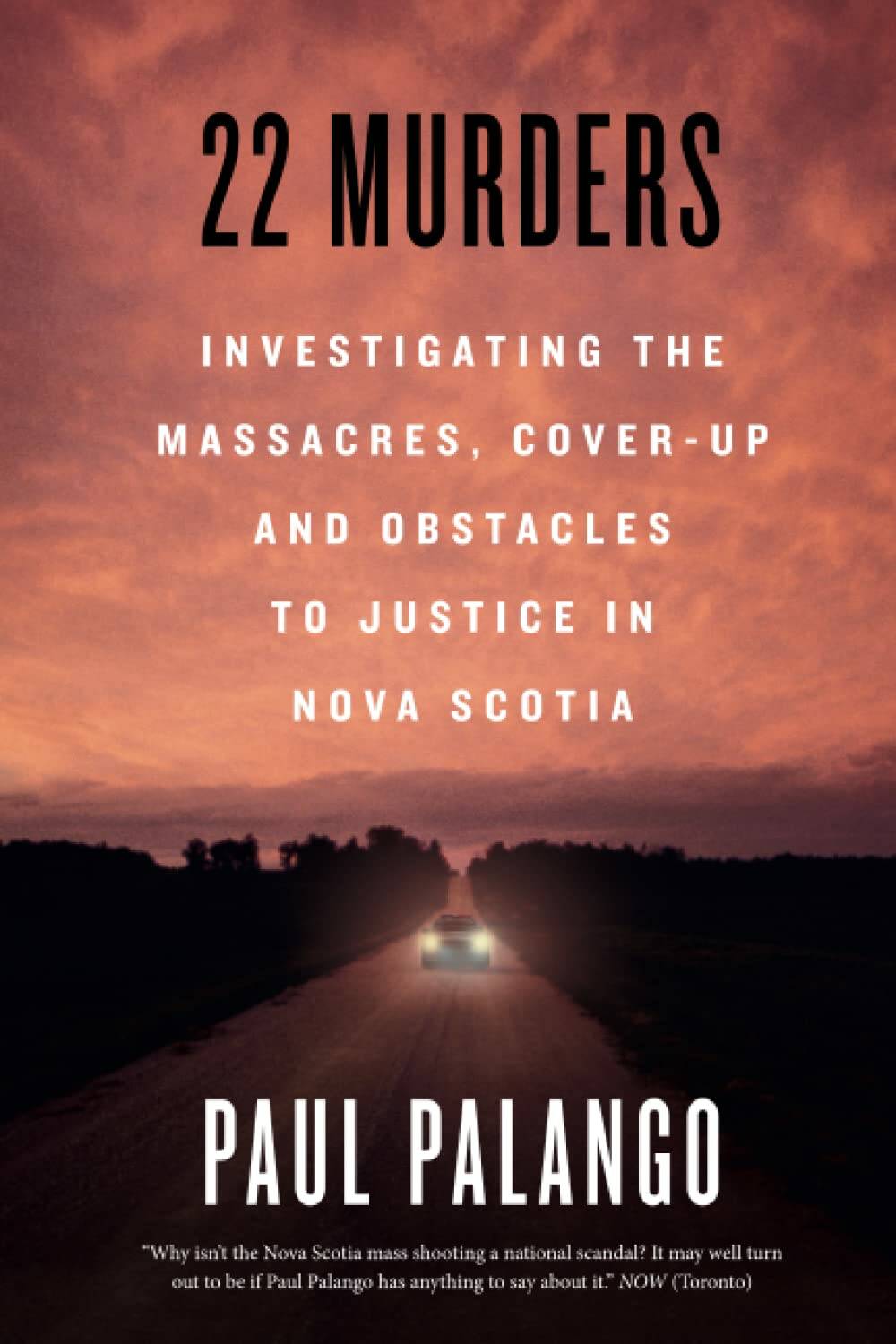Justice denied
RCMP’s many shortcomings chronicled in account of N.S. massacre
Advertisement
Read this article for free:
or
Already have an account? Log in here »
To continue reading, please subscribe:
Monthly Digital Subscription
$0 for the first 4 weeks*
- Enjoy unlimited reading on winnipegfreepress.com
- Read the E-Edition, our digital replica newspaper
- Access News Break, our award-winning app
- Play interactive puzzles
*No charge for 4 weeks then price increases to the regular rate of $19.00 plus GST every four weeks. Offer available to new and qualified returning subscribers only. Cancel any time.
Monthly Digital Subscription
$4.75/week*
- Enjoy unlimited reading on winnipegfreepress.com
- Read the E-Edition, our digital replica newspaper
- Access News Break, our award-winning app
- Play interactive puzzles
*Billed as $19 plus GST every four weeks. Cancel any time.
To continue reading, please subscribe:
Add Free Press access to your Brandon Sun subscription for only an additional
$1 for the first 4 weeks*
*Your next subscription payment will increase by $1.00 and you will be charged $16.99 plus GST for four weeks. After four weeks, your payment will increase to $23.99 plus GST every four weeks.
Read unlimited articles for free today:
or
Already have an account? Log in here »
Hey there, time traveller!
This article was published 14/05/2022 (1298 days ago), so information in it may no longer be current.
On April 18-19, 2020, 51-year-old denturist Gabriel Wortman murdered 22 people in and near the beachside community of Portapique, N.S.
For most of his killing spree, Wortman impersonated an RCMP officer by wearing a Mountie uniform and driving a replica RCMP vehicle. Armed with a Colt carbine rifle, a Ruger mini rifle, a Glock pistol, a Ruger pistol and a Smith & Wesson pistol, he shot all of his victims.
The massacre, to borrow author Paul Palango’s term, ended only when, while stopped at a gas station to refuel, two RCMP officers who’d also pulled in to gas up recognized and then fatally shot him.

The attacks remain the deadliest homicidal rampage in Canadian history.
Author Paul Palango is a veteran investigative journalist. He started his career as a reporter with the Hamilton Spectator newspaper in the 1970s and subsequently spent 13 years (1977-1990) as a reporter and editor with the Globe and Mail.
His account of, and investigation into, the mass killing is highly critical of both the RCMP’s initial response to reports of the shooting spree and its post-massacre public stance and proffered version of the tragic events. He doesn’t shy away from using the term “cover-up” to describe the Mounties’ failed performance of their duties — most critically, by not preventing many of the deaths by intercepting Wortman early on — and the force’s subsequent public-relations attempts to put an exculpatory spin on its conduct.
Palango’s book was published concurrently with Nova Scotia’s public inquiry into the killing spree, officially dubbed the “Mass Casualty Commission.” In testimony in April of this year, the province’s chief medical examiner concluded that Wortman, in addition to being fatally shot by the RCMP constables, fired a bullet into his own temple.
Much of the inquiry testimony to date buttresses Palango’s criticisms.
Nova Scotia has a province-wide all-media “Alert Ready” warning system which could — and should — have been utilized to warn the public there was a heavily armed killer masquerading as a Mountie on the rampage. Instead, the RCMP used the online social-media site Twitter.
Most of Nova Scotia, and particularly rural Nova Scotia, isn’t on Twitter, so few heard the warnings. The RCMP’s failure to use its best warning system — a system that may well have saved at least some lives over the two fateful days the shootings lasted — has never been satisfactorily explained.
The RCMP also failed to set up roadblocks once they knew they had a mobile killer driving hither and yon on central Nova Scotia’s few highways and provincial roads.
Nor, according to Palango, did the Mounties summon help from municipal police forces in the nearby towns of Amherst and Truro to bolster their search for the killer. Instead, it sought assistance from New Brunswick RCMP, located several hours’ drive away from the area under attack.
Palango’s most controversial assertion is that Wortman was likely an RCMP informant which at best would be a massive embarrassment to the Mounties and, at worst, compromised their response when the killings started or their subsequent investigation into how and why the rampage occurred — or both.

However, the evidence he’s gathered on this point, while intriguing, is largely circumstantial and conjectural. In strict legal terms, it’s what lawyers and judges would call less than probative.
Palango has written three prior books on the Mounties, and he’s forthright about being no fan of the institution and bureaucracy that is the RCMP. And at times he wears this animus on his sleeve.
Still, apart from a sometime tendency to move from grounded evidence to not-so-grounded conjecture, he has amassed a lot of research, and marshalled it well.
His principal object is to prove that 22 people needn’t have died over those two days in April 2020.
And in that object, he succeeds.
Douglas J. Johnston is a Winnipeg lawyer and writer.


